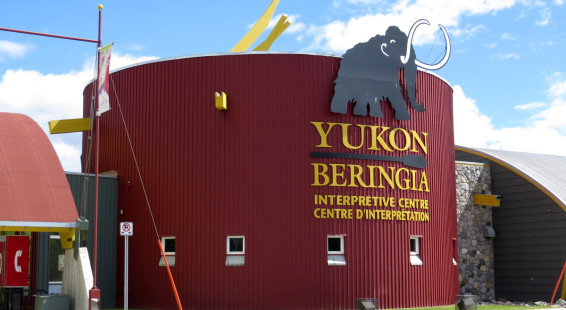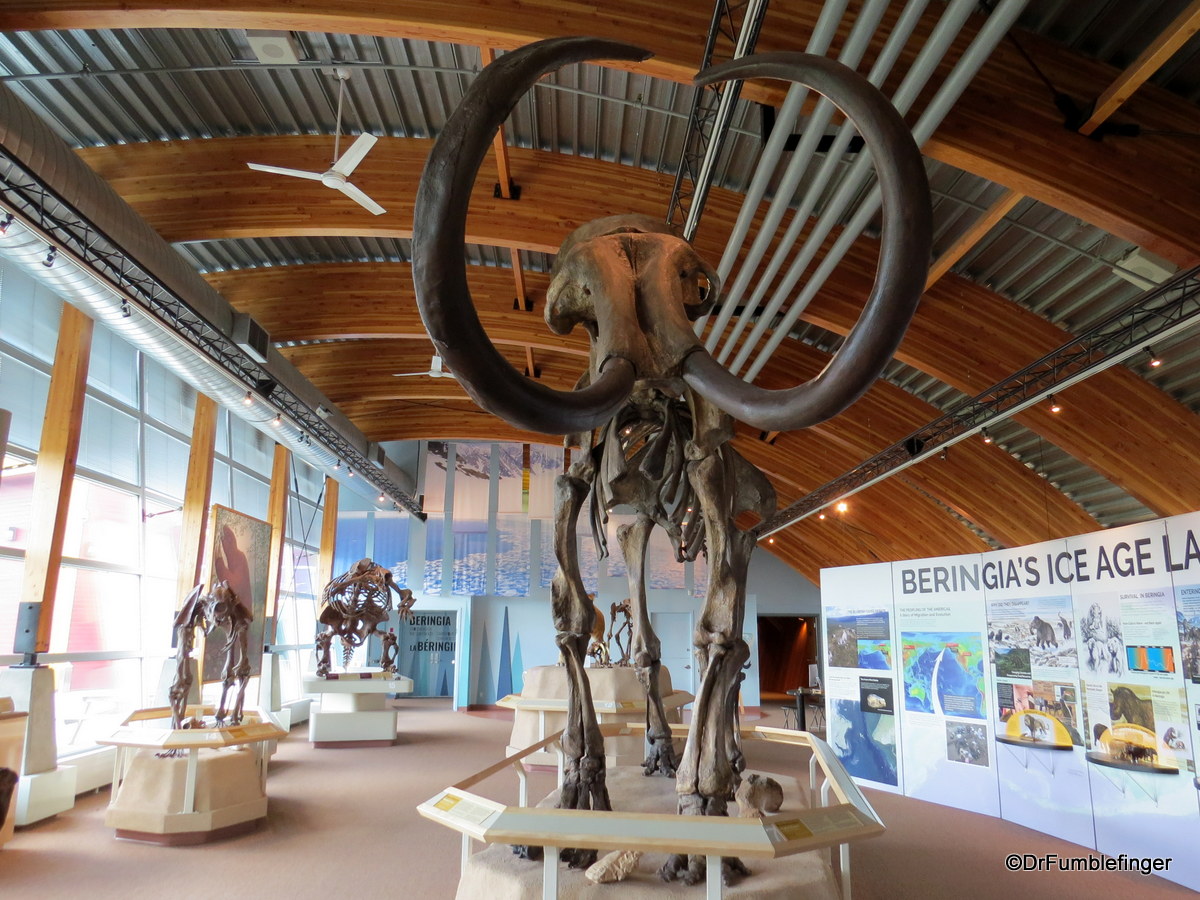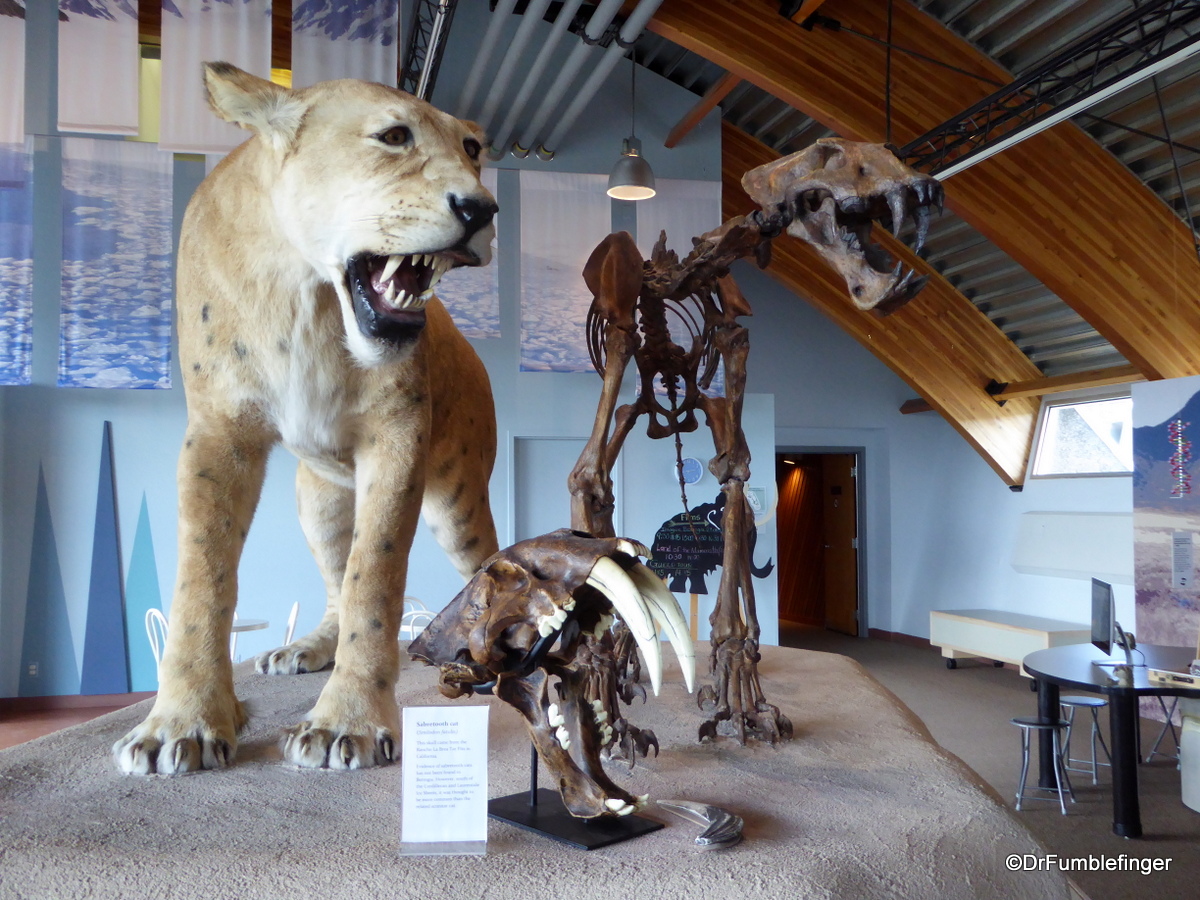
Canada’s Yukon territory is well know for its natural beauty and abundance of outdoor recreation. It’s a very sparsely populated region (one human for every 2 moose), but there are a few interesting indoor sites to visit including this one, which I think is the best in the territory.
Why was Beringia not covered with ice? Because while it was cold, it was too dry. The coastal mountains of Alaska so sheltered the interior of Alaska and the Yukon from moisture that there was not enough precipitation here to create a glacier. Because of thick ice sheets on the continents, the ocean levels were lowered and a land bridge appeared which allowed migration of people and animals between Asia and North America. It is this period in time that the Yukon Beringia Interpretive Centre studies and presents in such an interesting way.

Yukon Beringia Center, Whitehorse
The center has an interesting array of skeletal remains , some of these animals very familiar, like the woolly mammoth and the steppe bison. Others are less well known, like the giant short-faced bear, the ferocious scimitar cat, and the massive Jefferson Ground sloth.

Yukon Beringia Center, Whitehorse. American Scimitar Cat
Most of these Ice-Age animals, like the mammoth, have been extinct for over 10,000 years. Because of the cold northern climate many animal remains were frozen in the permafrost. Well-preserved remains (bones, hair, skin) are discovered (mostly by miners) to this day. Local legend in the Yukon tells of starving miners being forced to subsist off of defrosted mammoth meat during the Klondike gold rush.
The center also features murals and dioramas that depict information about the people who lived in Beringia. There are 3 mammoth statues located outside the building, and Beringia-related films. The Yukon Beringia Interpretive Centre is affiliated with the Alliance of Natural Museums of Natural History of Canada and the Virtual Museum of Canada.

Diorama at the Yukon Beringia Center, Whitehorse
The Yukon Beringia Interpretative Centre is situated just off the Alaska Highway, close to the Whitehorse airport, so it’s easy to find. The museum is open daily from 9 a.m. to 6 p.m. in summer and 12 p.m. to 5 p.m. in winter.The museum charges a small admission fee, well worth it. Free tours are held several times a day and are highly recommended. Your guide will be knowledgeable and provide you a lot of information about life back during the Ice Age in the Yukon.
(Click on thumbnails to enlarge, right arrows to advance slideshow)